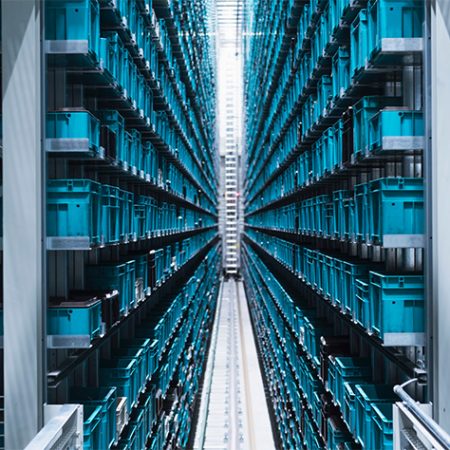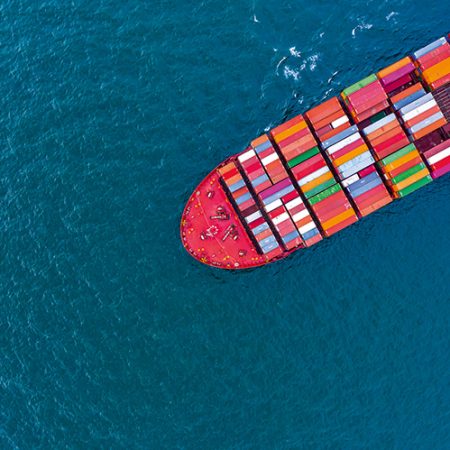The pandemic undoubtedly created major challenges for prime retail spots in cities all over the world. Grappling with a series of domestic lockdowns and international travel bans, many major destination cities struggled to sustain demand throughout 2020 and 2021. Footfall fell. Retailers took a close look at existing store networks. And rising vacancies led landlords to reconsider rental terms in some markets.
But with 2022 being the year that the world seems to be reopening, as restrictions lift and tourists return, how might we see these prime retail destinations recover?
As our retailer attractiveness city ranking illustrates both the pace and shape of how destination cities recover is deeply nuanced. Those destination cities that benefit from a strong domestic market, such as New York and Shanghai, have already demonstrated far higher levels of resilience in the past 18 months, and look set for a far quicker bounce back.
Take New York, where the combination of the scale of its retail market and the affluence of its domestic consumers have pushed it to the top of our ranking, narrowly ahead of Paris and London.
In contrast, those cities dependent on a steady stream of inbound tourism have faced sharper declines, and are likely to face a longer road to recovery. In Hong Kong, for example, where tourism forms a key pillar of the city’s economy, rents fell steeply from Q4 2019 to Q3 2021.
By sparking this mixed recovery among key destination cities, the pandemic has highlighted a number of emerging markets that present exciting opportunities for retailers in the years ahead, primarily across the Middle East and China.
Despite the migration to e-commerce in many markets, the resilience of many of these destination cities serves to illustrate a broader point: that physical retail remains a key tool for both brands and retailers when it comes to reconnecting with their consumers, enhancing exposure and ultimately driving retail sales.
Yes, Covid-19 created inevitable challenges. But rather than result in a material shift in prime retail areas, it served more to accelerate previous trends – the rationalisation of store footprints by mass-market fashion brands, the emergence of experiential brand spaces, and a refocusing on key streets and city centres – rather than diminish the critical role played by physical retail.
Here are four global trends that we predict will shape the future outlook of key retail destination cities.
TREND 1: Prime global cities will retain their status
Though all major global cities faced challenges as a result of the pandemic, the key fundamentals of a successful prime retail destination don’t look set to change. That’s why New York, Paris and London remain top of our ranking – albeit all for slightly different reasons.
In New York, a large, reliable domestic spend from its relatively wealthy population helped shelter it from the temporary closure of international tourism, as did a robust domestic tourism market. In central Paris too, its prime retail locations continued to benefit from its population of 2.1 million, as well as a lower penetration of e-commerce spend compared with other markets. And in London, forecasts of a return to pre-pandemic traveller numbers by 2023 look set to underpin a swift recovery, with many retailers already reactivating their requirements in the capital.
Changes in consumer shopping habits, in particular the growth in online and declining department store spend, have seen some challenges around the vacancies of large retail units in a number of markets, as brands recalibrate the size and type of store they require, but this doesn’t undermine the fact that the fundamental appeal of prime destinations hasn’t changed.
Moving up the ranking is Shanghai, with significant growth prospects alongside the scale of its retail market. Its resilience is down to a few key drivers, explains Nick Bradstreet, Head of Asia Pacific Retail, Savills. These include “the lack of outbound travel fuelling luxury spend, the emphasis on government on supporting domestic consumption and also the emergence of new retail sectors gaining traction, including more demand for sport and outdoor retailers and new energy vehicles (NEVs).”
In fact, Shanghai secured 16 new major retail projects in 2021, including Swire’s Qiantan Taikoo Li, Jiuguang in Zhabei and CapitaLand’s Raffles City.
Shanghai has significant growth prospects due to the scale of its retail market
TREND 2: Key emerging markets set to create expansion opportunities for retailers
For those retailers looking to expand their global footprints, the new normal also looks set to elevate some key emerging markets up the ranking.
The Middle East is a prime example, where already there are clear signs of retailer demand, with a shift away from purely franchises to brand-owned stores in key locations, and a strong focus on luxury. In this regard, Dubai is leading the way.
“Dubai is one of the most cosmopolitan cities in the world, home to more than 200 nationalities,” says Kenny Lam, Savills Associate Director in the region. “The majority of luxury brands are represented by mono-brand stores through local franchises/partners, but with the change in government policies we are starting to see international brands come in directly.” Cairo, Saudi Arabia and Bahrain represent growing opportunities too, he adds.
In Saudi Arabia, luxury brands are buying back businesses and establishing larger teams on the ground, able to coordinate events and activations to build their brand.
In China, alongside growth from cities such as Shanghai, there lies a significant opportunity across its non-top-tier cities. “A stringent Covid-19 containment policy has fuelled domestic tourism and subsequently the emergence of new retail hotspots,” says Bradstreet. In particular, luxury brands will follow the lead of top developers, he adds, which are expanding into Chengdu, Hangzhou, Kunming and Ningbo, among others. “We see the most potential in Hainan, with the full island set to be a duty-free zone by 2025.”
TREND 3: Retailers that sustained growth during the pandemic will fuel future demand
While those retail sectors that struggled during the pandemic will likely use the next year to recalibrate and reconsider store expansion strategies, those that sustained or even grew sales during the same period look set to accelerate store expansion, benefitting from a rebasing in rents in some markets.
Success stories during the pandemic include athleisure, homeware, wellness, food and beverage and electric vehicles (EVs). All continued to trade well both online and offline, when able to trade physically, over the past 18 months, and will move ahead capitalising on strong revenues and attractive store opportunities in the wake of the pandemic. For those sectors, now is a prime moment to acquire new sites and grow their physical footprints, as great units in great locations may be available at far cheaper rents than in 2019.
Athleisure brand Gymshark, for example, is set to open its first bricks-and-mortar outlet on Regent Street in London following meteoric sales growth during the pandemic. The three-floor, 18,000 sq ft space, formerly home to J Crew, will act as a flagship outlet for the upmarket brand, firmly cementing its status in the sector with a spot at one of the world’s top retail destinations, despite being less than 10 years old. EV manufacturer Polestar too has opened a string of new physical retail spaces, doubling its global presence from nine to 18 markets, and increasing its physical locations to 100 in 2021.
For luxury brands, meanwhile, the dynamics of the current market may make it possible to relocate existing stores to larger units in stronger locations, as well as providing opportunities for new luxury entrants.
TREND 4: From transactional to experiential stores
A trend prior to the pandemic – and one set to continue – is the evolution of physical retail from a transactional space into an experiential, brand-building one. This reflects the changing role of physical stores in an increasingly digitised commerce landscape, turning them into aspirational destinations that straddle leisure and entertainment.
On the one hand, we’re seeing this as a trend leveraged by traditional retailers. In 2021, shoe brand Vans – which saw digital revenues grow by 53% in 2020 – announced it would open a permanent ‘House of Vans’ location in Mexico City. Part skatepark, part music venue and part art gallery, the space is a community hub for street culture rather than a transactional space, with other locations in Chicago and London.
Upmarket US furniture retailer RH has also seen “phenomenal success” by merging retail and hospitality in its galleries, says Sam Foyle, Director of Retail, Savills. “They have merged retail and hospitality in a unique way. Their restaurant offer is within their galleries. When you go into their stores, you can sit on their furniture and have a glass of wine. They don’t look at property as a sales tool, it’s about how it can showcase and elevate their brand. The galleries are an expression.”
Brands that don’t classically rely on physical retail stores are experimenting with brand-building spaces too. Netflix is set to open its first physical store in Tokyo. It will host experiential features that cement its foothold in the entertainment and tech space, with merchandise and installations from popular shows and a deep dive into its artificial intelligence algorithm.
The appetite for experiential spaces serves a key need for physical connection with consumers in an online world. “When retailers are taking ultra-prime locations in global cities now, the financials are part of the conversation, but it’s also about, ‘What does this do for our brand?’” says Foyle.
The role of physical stores in an increasingly digitised commerce landscape is changing, turning stores into aspirational destinations that straddle leisure and entertainment



